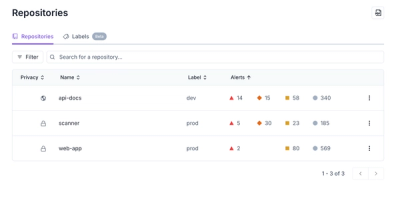
Security News
VulnCon 2025: NVD Scraps Industry Consortium Plan, Raising Questions About Reform
At VulnCon 2025, NIST scrapped its NVD consortium plans, admitted it can't keep up with CVEs, and outlined automation efforts amid a mounting backlog.
DVCLive is a Python library for logging machine learning metrics and other metadata in simple file formats, which is fully compatible with DVC.
| Python API Overview | PyTorch Lightning | Scikit-learn | Ultralytics YOLO v8 |
|---|---|---|---|
$ pip install dvclive
$ git init
$ dvc init
$ git commit -m "DVC init"
Copy the snippet below into train.py for a basic API usage example:
import time
import random
from dvclive import Live
params = {"learning_rate": 0.002, "optimizer": "Adam", "epochs": 20}
with Live() as live:
# log a parameters
for param in params:
live.log_param(param, params[param])
# simulate training
offset = random.uniform(0.2, 0.1)
for epoch in range(1, params["epochs"]):
fuzz = random.uniform(0.01, 0.1)
accuracy = 1 - (2 ** - epoch) - fuzz - offset
loss = (2 ** - epoch) + fuzz + offset
# log metrics to studio
live.log_metric("accuracy", accuracy)
live.log_metric("loss", loss)
live.next_step()
time.sleep(0.2)
See Integrations for examples using DVCLive alongside different ML Frameworks.
Run this a couple of times to simulate multiple experiments:
$ python train.py
$ python train.py
$ python train.py
...
DVCLive outputs can be rendered in different ways:
You can use dvc exp show and dvc plots to compare and visualize metrics, parameters and plots across experiments:
$ dvc exp show
─────────────────────────────────────────────────────────────────────────────────────────────────────────────
Experiment Created train.accuracy train.loss val.accuracy val.loss step epochs
─────────────────────────────────────────────────────────────────────────────────────────────────────────────
workspace - 6.0109 0.23311 6.062 0.24321 6 7
master 08:50 PM - - - - - -
├── 4475845 [aulic-chiv] 08:56 PM 6.0109 0.23311 6.062 0.24321 6 7
├── 7d4cef7 [yarer-tods] 08:56 PM 4.8551 0.82012 4.5555 0.033533 4 5
└── d503f8e [curst-chad] 08:56 PM 4.9768 0.070585 4.0773 0.46639 4 5
─────────────────────────────────────────────────────────────────────────────────────────────────────────────
$ dvc plots diff $(dvc exp list --names-only) --open

Inside the DVC Extension for VS Code, you can compare and visualize results using the Experiments and Plots views:


While experiments are running, live updates will be displayed in both views.
If you push the results to DVC Studio, you can compare experiments against the entire repo history:

You can enable Studio Live Experiments to see live updates while experiments are running.
DVCLive is an ML Logger, similar to:
The main differences with those ML Loggers are:
You can then use different options to visualize the metrics, parameters, and plots across experiments.
Contributions are very welcome. To learn more, see the Contributor Guide.
Distributed under the terms of the Apache 2.0 license, dvclive is free and open source software.
FAQs
Experiments logger for ML projects.
We found that dvclive demonstrated a healthy version release cadence and project activity because the last version was released less than a year ago. It has 2 open source maintainers collaborating on the project.
Did you know?

Socket for GitHub automatically highlights issues in each pull request and monitors the health of all your open source dependencies. Discover the contents of your packages and block harmful activity before you install or update your dependencies.

Security News
At VulnCon 2025, NIST scrapped its NVD consortium plans, admitted it can't keep up with CVEs, and outlined automation efforts amid a mounting backlog.

Product
We redesigned our GitHub PR comments to deliver clear, actionable security insights without adding noise to your workflow.

Product
Our redesigned Repositories page adds alert severity, filtering, and tabs for faster triage and clearer insights across all your projects.